Jefferson
Active member
- Joined
- Apr 21, 2012
- Messages
- 190
- Reaction score
- 28
- Points
- 28
- Location
- Southwest Missouri
- Country
- United States
This past Wednesday, I graduated from high school and began the trek south into Salamander Mecca with my best friend. After a long night of dreary driving on I-75, we stopped at a Waffle House in Caryville, Tennessee for some sweet tea and grits, staples of the Upper Southern diet. We got to the Smoky Mountains around 8:30 am, about forty-five minutes earlier than planned, and met up with a fellow herper and her family just outside the park, with whom we would spend the next two and a half days.
Our first spot was somewhat of a bust, and yielded only a gaggle of Spotted Dusky Salamanders, which just may be the most common salamanders in the Southeast. Our second spot in the Tennessee foothills gave us some more Spotted Duskies, many Black-Bellied Salamanders, and some Seal Salamanders. By the time we hit the third spot, we had seen a bear, discussed Fourth Amendment rights, and I had offered up a rendering of John Denver's "Country Roads" for my video camera, but my friend and I were beat tired and the spot yielded next to nothing salamander-wise.
Back at the motel, I played some cards and guitar before getting a very good night's sleep. The next day started early with us ascending the foothills and heading straight into the heart of the Smoky Mountains to a creek where we got a Blue Ridge Two-Lined and Blue Ridge Spring larvae (both lifers for my fellow herper), a few Imitator Salamanders, and a couple of Santeetlah Dusky Salamanders. After a couple of gorgeous mountain overlooks on the Carolina side, we traversed the Nantahala Mountains south of the park and hit a trail that descended into an old growth deciduous forest and saw Chattahoochee Slimy Salamanders, Southern Red-backed Salamanders, and an extremely colorful juvenile Ocoee Salamander, all of which were lifers for my herping partner on the trip and one of which was a lifer for me. As if that weren't enough, the small stream just down the trail gave us a Seepage Salamander (lifer for me) with the classic Y-shape on the back of the head, which was hiding under a piece of moss at the side of the creek, a multitude of Ocoee and Spotted Dusky Salamanders with different coloration patterns, and arguably the best find of the trip--a Blue Ridge Spring Salamander adult hiding under a mid-size rock in a stream riffle! It was a bright orange beauty of a specimen and moved with a swagger reminiscent of a politician preparing to deliver a victory speech. It was the most impressive salamander that I have observed to this point without a doubt.
A ways up the road, Red-legged Salamanders were checked off the list in short order amidst a beautiful rhododendron thicket. From here, we rode back the way we came after seeing a Snapping Turtle on the road and out on the Blue Ridge Parkway toward a secluded Smoky Mountain spot, which has an unusually high concentration of birch trees. At the trail head sat an Elk, which was reintroduced to the East years ago by the park service. The spot gave up Southern Gray-Cheeked and Pygmy Salamanders within fifteen minutes, and we decided to not hit the rest of the primitive mountain road, but return to Tennessee and find the icon of the Smokies--the Red-Cheeked Salamander. In this endeavor, we were successful in the wake of the harrowing drive back over the crest of the Smoky Mountains, and found nine Red-Cheeks and many Imitator Salamanders with good cheek patches, which rounded out a day with two lifers for me and nine for my herping companion. Keep in mind that my best friend, who I took with me from Michigan, had never seen any Appalachian salamanders or the mountains themselves, and was thrilled with both.
A late night road cruise failed to give us any snakes but did result in a striking Blue Ridge Two-Lined Salamander and a couple Black-Bellied Sallies along a rushing mountain brook. The final day in the Smoky Mountains included a stop in the northern part of the national park, where I got my fellow herper her tenth and last lifer of the trip in the form of a Southern Appalachian Salamander, a species endemic to the Smoky Mountains and the surrounding mountains. From here, we parted with our herping companions and started north on I-40 to I-75 in Knoxville. We got off in Kentucky on US 68 and say 110 yard sales within 35 miles of highway before crossing into the most scenic part of Ohio-the South-Central foothills. My best friend couldn't believe that we were in Ohio when the terrain was hilly and forested and gas station attendants spoke with mountain twangs! I've always thought that if Ohio was to be the stereotypical Midwestern state that most think of, they would have to give the southeastern and south central counties to either West Virginia or Kentucky!
A serene spot nestled in the hills gave us some Newts, a Southern Two-Lined hiding in a seep reputed to have muddies, and a great many Northern Dusky Salamanders, which brought our trip total to 19 species! After a near-supernatural encounter in the lodge, my friend and I put on the road cruising theme music and saw a few American Toads and a Milk Snake on the back roads of Adams and Scioto County, but not before being pulled over by a county cop, who was understandably suspicious of two young men going six miles per hour on a rural road for a half hour on out of state plates! My friend actually showed the cop our pictures of the Milk Snake and said of why he was riding the middle, "I would have let you pass, but I couldn't trust you not to run over the snakes." At that point, my friend officially became a herper.
Our last day was somewhat uneventful, but saw us get a Red-spotted Newt in unusual habitat on the edge of Ohio's Appalachian foothills and a few Green Frogs on the till plains in Northwest Ohio before arriving home, along with a string of ironies. It was a trip that I will never forget, in terms of salamanders and in terms of fun. Enjoy the pictures!
Until next trip,
Jefferson
Our first spot was somewhat of a bust, and yielded only a gaggle of Spotted Dusky Salamanders, which just may be the most common salamanders in the Southeast. Our second spot in the Tennessee foothills gave us some more Spotted Duskies, many Black-Bellied Salamanders, and some Seal Salamanders. By the time we hit the third spot, we had seen a bear, discussed Fourth Amendment rights, and I had offered up a rendering of John Denver's "Country Roads" for my video camera, but my friend and I were beat tired and the spot yielded next to nothing salamander-wise.
Back at the motel, I played some cards and guitar before getting a very good night's sleep. The next day started early with us ascending the foothills and heading straight into the heart of the Smoky Mountains to a creek where we got a Blue Ridge Two-Lined and Blue Ridge Spring larvae (both lifers for my fellow herper), a few Imitator Salamanders, and a couple of Santeetlah Dusky Salamanders. After a couple of gorgeous mountain overlooks on the Carolina side, we traversed the Nantahala Mountains south of the park and hit a trail that descended into an old growth deciduous forest and saw Chattahoochee Slimy Salamanders, Southern Red-backed Salamanders, and an extremely colorful juvenile Ocoee Salamander, all of which were lifers for my herping partner on the trip and one of which was a lifer for me. As if that weren't enough, the small stream just down the trail gave us a Seepage Salamander (lifer for me) with the classic Y-shape on the back of the head, which was hiding under a piece of moss at the side of the creek, a multitude of Ocoee and Spotted Dusky Salamanders with different coloration patterns, and arguably the best find of the trip--a Blue Ridge Spring Salamander adult hiding under a mid-size rock in a stream riffle! It was a bright orange beauty of a specimen and moved with a swagger reminiscent of a politician preparing to deliver a victory speech. It was the most impressive salamander that I have observed to this point without a doubt.
A ways up the road, Red-legged Salamanders were checked off the list in short order amidst a beautiful rhododendron thicket. From here, we rode back the way we came after seeing a Snapping Turtle on the road and out on the Blue Ridge Parkway toward a secluded Smoky Mountain spot, which has an unusually high concentration of birch trees. At the trail head sat an Elk, which was reintroduced to the East years ago by the park service. The spot gave up Southern Gray-Cheeked and Pygmy Salamanders within fifteen minutes, and we decided to not hit the rest of the primitive mountain road, but return to Tennessee and find the icon of the Smokies--the Red-Cheeked Salamander. In this endeavor, we were successful in the wake of the harrowing drive back over the crest of the Smoky Mountains, and found nine Red-Cheeks and many Imitator Salamanders with good cheek patches, which rounded out a day with two lifers for me and nine for my herping companion. Keep in mind that my best friend, who I took with me from Michigan, had never seen any Appalachian salamanders or the mountains themselves, and was thrilled with both.
A late night road cruise failed to give us any snakes but did result in a striking Blue Ridge Two-Lined Salamander and a couple Black-Bellied Sallies along a rushing mountain brook. The final day in the Smoky Mountains included a stop in the northern part of the national park, where I got my fellow herper her tenth and last lifer of the trip in the form of a Southern Appalachian Salamander, a species endemic to the Smoky Mountains and the surrounding mountains. From here, we parted with our herping companions and started north on I-40 to I-75 in Knoxville. We got off in Kentucky on US 68 and say 110 yard sales within 35 miles of highway before crossing into the most scenic part of Ohio-the South-Central foothills. My best friend couldn't believe that we were in Ohio when the terrain was hilly and forested and gas station attendants spoke with mountain twangs! I've always thought that if Ohio was to be the stereotypical Midwestern state that most think of, they would have to give the southeastern and south central counties to either West Virginia or Kentucky!
A serene spot nestled in the hills gave us some Newts, a Southern Two-Lined hiding in a seep reputed to have muddies, and a great many Northern Dusky Salamanders, which brought our trip total to 19 species! After a near-supernatural encounter in the lodge, my friend and I put on the road cruising theme music and saw a few American Toads and a Milk Snake on the back roads of Adams and Scioto County, but not before being pulled over by a county cop, who was understandably suspicious of two young men going six miles per hour on a rural road for a half hour on out of state plates! My friend actually showed the cop our pictures of the Milk Snake and said of why he was riding the middle, "I would have let you pass, but I couldn't trust you not to run over the snakes." At that point, my friend officially became a herper.
Our last day was somewhat uneventful, but saw us get a Red-spotted Newt in unusual habitat on the edge of Ohio's Appalachian foothills and a few Green Frogs on the till plains in Northwest Ohio before arriving home, along with a string of ironies. It was a trip that I will never forget, in terms of salamanders and in terms of fun. Enjoy the pictures!
Until next trip,
Jefferson
Attachments
-
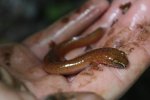 smoky mountain trip 2015 114.jpg54.7 KB · Views: 310
smoky mountain trip 2015 114.jpg54.7 KB · Views: 310 -
 smoky mountain trip 2015 289.jpg150.3 KB · Views: 278
smoky mountain trip 2015 289.jpg150.3 KB · Views: 278 -
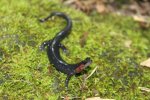 smoky mountain trip 2015 303.jpg103.5 KB · Views: 289
smoky mountain trip 2015 303.jpg103.5 KB · Views: 289 -
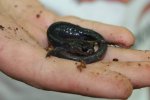 smoky mountain trip 2015 267.jpg50.1 KB · Views: 250
smoky mountain trip 2015 267.jpg50.1 KB · Views: 250 -
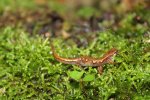 smoky mountain trip 2015 253.jpg108.5 KB · Views: 287
smoky mountain trip 2015 253.jpg108.5 KB · Views: 287 -
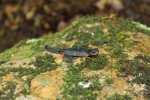 smoky mountain trip 2015 187.jpg116.4 KB · Views: 263
smoky mountain trip 2015 187.jpg116.4 KB · Views: 263 -
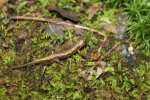 smoky mountain trip 2015 155.jpg145.9 KB · Views: 272
smoky mountain trip 2015 155.jpg145.9 KB · Views: 272 -
 smoky mountain trip 2015 092.jpg43.8 KB · Views: 285
smoky mountain trip 2015 092.jpg43.8 KB · Views: 285
Last edited by a moderator:
